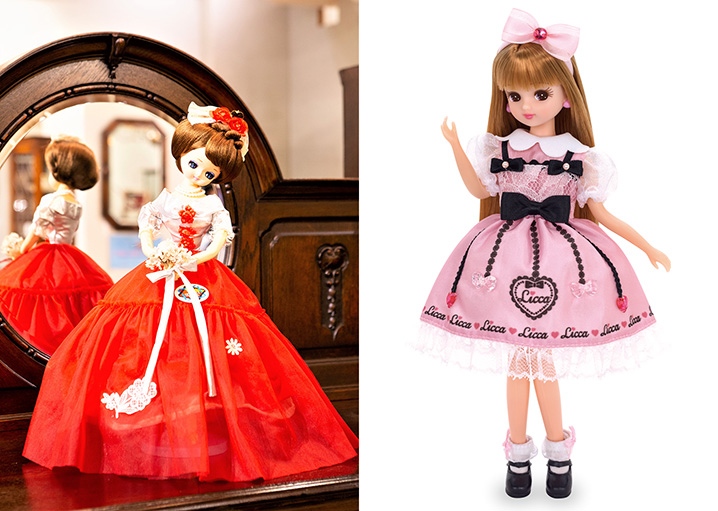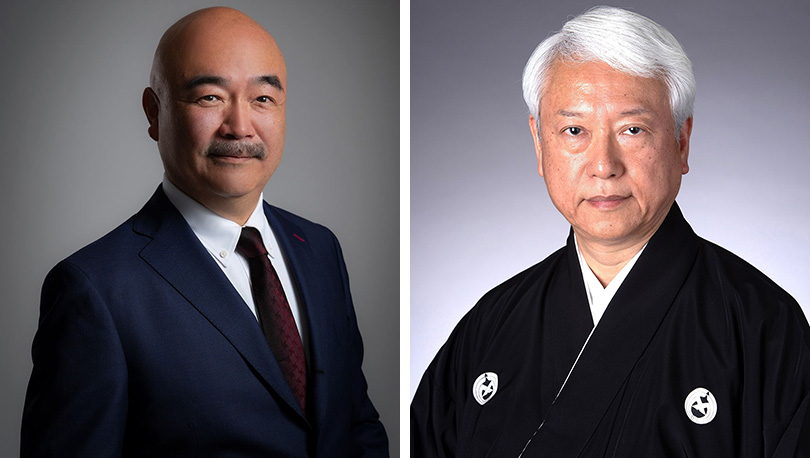Special Exhibition “Japanese Dolls: From Showa to Heisei and Reiwa eras”
Virtual Opening Reception

June 17 – July 28, 2021
The Nippon Club WEB Gallery
Although dolls are children’s toys, they also fulfill shared ethnicity, cultural customs, and history. Dolls have evolved and changed over time, and those used for religious rituals and festivals gradually came to be passed on to children as their playthings. Playing with dolls is a healthy activity for encouraging the healthy growth of both children’s bodies and minds, nurturing affection and imagination.
This exhibition displays dolls that were popular primarily among children in the early Showa to Reiwa eras. Organized by generation, they can be enjoyed with background information on each corresponding period. It also exhibits the “Blue-eyed Doll” (Friendship Doll) presented to Japan as a gift from the United States in 1927. Together with the Japanese Friendship Doll as a return gift, it introduces the history of friendship by exchanging dolls between the two countries.
During the exhibition, we will post a quiz in the WEB gallery. We will make a draw from among those who answered correctly and select 5 persons to receive a Licca-chan doll. Please look forward to it!
Organized by The Nippon Club
Supported by the J.C.C. Fund
(Philanthropic Fund of Japanese Chamber of Commerce and Industry in New York)
Supported by The Japan International Doll and Toy Research Association
In cooperation with Cross World Connection Co., Ltd, KODAMA SANGYO Toy Co., Ltd, SEKIGUCHI co., LTD, TOMY International, Inc., NAKAJIMA CORPORATION, BANDAI CO., LTD, VOLKS INC., Masudaya Corporation, Mattel, Inc., melhenz Ltd., Yokohama Doll Museum, Sakae Ward, Yokohama City, Satoko Kono (JAPAN TOY CULTURE FOUNDATION) and Antique Shop “Geographica”
Supervised by JAPAN TOY CULTURE FOUNDATION
Curated by Shoko Hayashi
◆French Doll(Left Photo)
Height 55cm Material: cloth, cotton wool, wire
In the 1950s and 1960s, French dolls in ball-style dresses gained popularity in Japan. Decorated on a drawing room and piano, it was also a symbol of the wealthy life of the era of high-speed economic growth.
◆4th Generation Licca-chan “I love you, Licca” 1987〜(Right Photo)
Height 22 cm Material: hair PVC fiber, chest ABS resin, arms/feet/head polyvinyl chloride
Licca-chan is an indispensable doll in the toy history of the Showa era to the Heisei era. In 2017,
the 50th anniversary was celebrated, and the national traveling exhibition “50th Anniversary Exhibition” was held in many cities in Japan. It was an exhibition that three generations of parents visited.
“Japanese Dolls: From Showa to Reiwa eras”
Virtual Opening Reception
Thursday, June 17, 2021
7:00 pm to 7:50 pm (EDT)
Admission free
(A suggested donation for Let’s Support COVID-19 Fighters!)
Mr. Toyohiko Sato, Chairman of the Japan Toy Culture Foundation, will talk about Japanese Dolls from Showa to Reiwa eras. And then, we will hold “Mini Bunraku performance and commentary” Along with Kabuki and Noh, Bunraku is known as a traditional Japanese performing art. A puppetry tradition that has continued for more than 300 years is characterized by the sophisticated techniques required to simulate realistic movement in the puppets and tell classical stories. Mr. Kanya Yoshida, who won the National Bunraku Theatre’s Grand Prize last year, will talk about its profound charm.
*The event will be held in Japanese, but The Nippon Club will be providing real-time subtitles in English through Wordly.
*This event is an online event via Zoom. The actual event is not being held at The Nippon Club building.

■Toyohiko Sato (Left Photo)
Chairman of the Japan Toy Culture Foundation. He has organized exhibitions for toys and dolls in Japan. In 2016, he also managed the very first exhibition of Licca-chan in the world, “Licca Symbol of Kawaii,” in Paris. The following year, the idea of the 50th anniversary Licca-chan exhibition and extraordinary cooperation. Currently, he has built a great licensing partner with Steiff in Germany.
■Kanya Yoshida (Right Photo)
At the age of 19, he enrolled at the National Theatre for Bunraku and has been an accomplished Bunraku puppet master for more than 40 years. In 1986, he served an apprenticeship with the third generation Minosuke Yoshida and took the surname Yoshida. Later he received various awards. Recently, he received the Grand Prize of the 40th National Theater Bunraku.
【CONTACT】gallery@nipponclub.org








